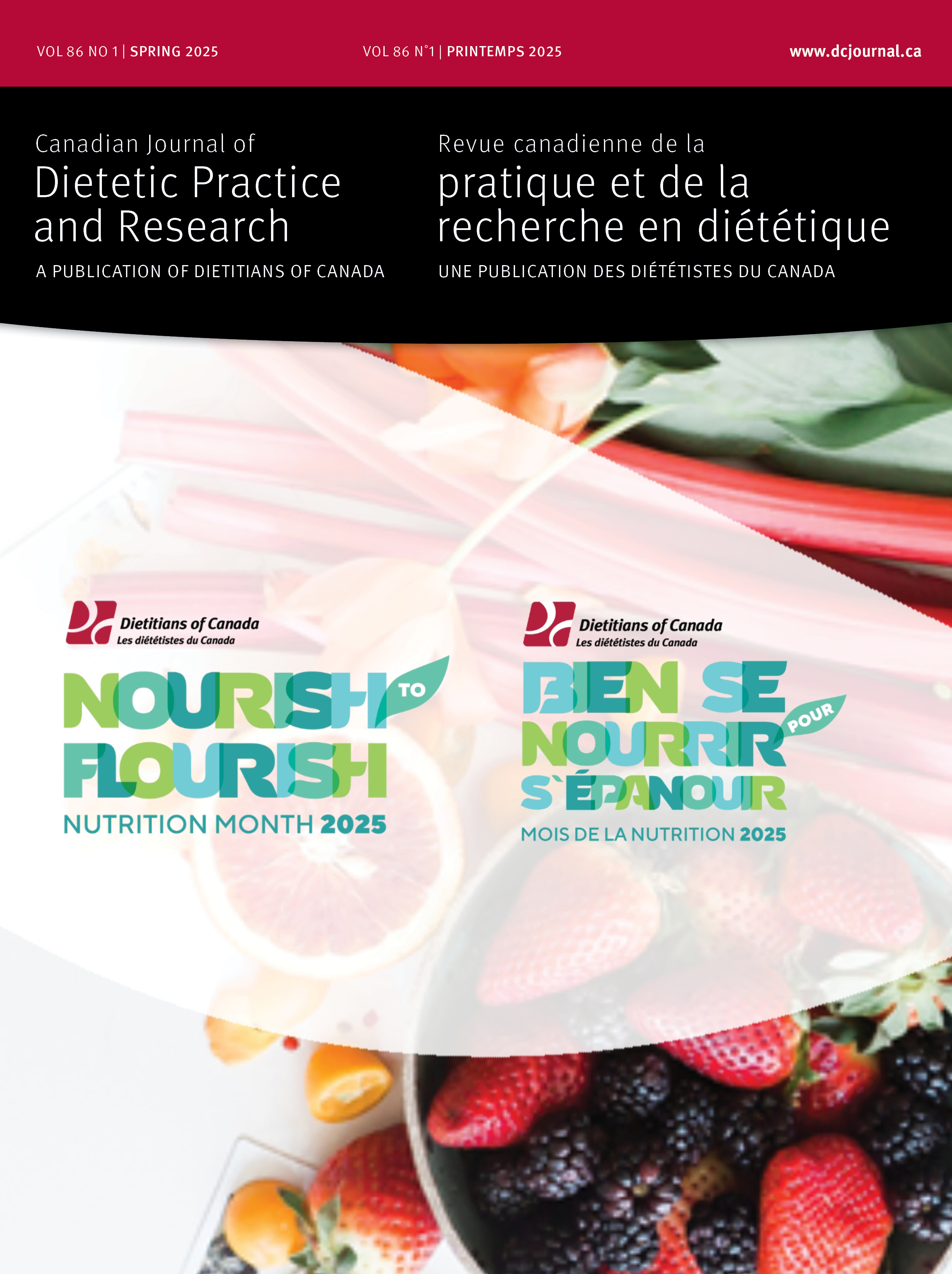Volume 64 • Number 2 • July 2003
Chair’s Message
Research
The Basic Shelf Experience is a program designed to assist people living on limited incomes to make better use of their food resources. The purpose of this research was to learn if the Basic Shelf Experience program helps such people to 1. utilize food resources more effectively and 2. cope, through group support, with poverty-associated stressors that influence food security. Both quantitative and qualitative methods were used to evaluate the program objectives. Participants completed a questionnaire at the beginning and end of the six-week program. The questionnaire asked about their food access, food security, and feelings about themselves. Participants returned for a focus group discussion and completed the questionnaire again three months after the program ended. The focus group was designed to elicit information about perceived changes, if any, attributed to the program. Forty-two people completed the questionnaires pre-program and 20 post-program; 17 participated in the three-month follow-up session. While results from quantitative data analysis indicate that program objectives were not met, qualitative data provide evidence that the program did achieve its stated objectives. Our results suggest such programs as the Basic Shelf Experience can assist people living on limited incomes to achieve food security.
Report
While it is important that dietitians and other health or food professionals provide consistent messages to the public about food safety, it is equally important that the information be evidencebased. Conflicting recommendations are evident when reviewing consumer publications from food safety advisory groups and the scientific literature. In addition, caveats are attached to the various food-handling methods. Pathogens, spoilage microorganisms, and contamination of the work area are the major concerns in thawing turkey. While several methods, including thawing on the counter at ambient temperatures, can be employed for thawing turkey, cooking to an adequate internal temperature, validated with a meat thermometer, is the more critical step. The findings indicate that providing clients or consumers with clear, consistent, evidence-based messages is difficult for food and health professionals. Further research is required to corroborate best practices in a kitchen setting. This paper is of interest to professionals who counsel clients at high risk for foodborne illness, or who counsel consumers about safe preparation of foods such as turkey.
Public Policy Statements
It is the position of the American Dietetic Association and Dietitians of Canada that appropriately planned vegetarian diets are healthful, nutritionally adequate, and provide health benefits in the prevention and treatment of certain diseases. Approximately 2.5% of adults in the United States and 4% of adults in Canada follow vegetarian diets. A vegetarian diet is defined as one that does not include meat, fish, or fowl. Interest in vegetarianism appears to be increasing, with many restaurants and college foodservices offering vegetarian meals routinely. Substantial growth in sales of foods attractive to vegetarians has occurred and these foods appear in many supermarkets. This position paper reviews the current scientific data related to key nutrients for vegetarians including protein, iron, zinc, calcium, vitamin D, riboflavin, vitamin B-12, vitamin A, n-3 fatty acids, and iodine. A vegetarian, including vegan, diet can meet current recommendations for all of these nutrients. In some cases, use of fortified foods or supplements can be helpful in meeting recommendations for individual nutrients. Well-planned vegan and other types of vegetarian diets are appropriate for all stages of the life-cycle including during pregnancy, lactation, infancy, childhood, and adolescence. Vegetarian diets offer a number of nutritional benefits including lower levels of saturated fat, cholesterol, and animal protein as well as higher levels of carbohydrates, fibre, magnesium, potassium, folate, antioxidants such as vitamins C and E, and phytochemicals. Vegetarians have been reported to have lower body mass indices than non-vegetarians, as well as lower rates of death from ischemic heart disease, lower blood cholesterol levels, lower blood pressure, and lower rates of hypertension, type 2 diabetes, and prostate and colon cancer. While a number of federally funded and institutional feeding programs can accommodate vegetarians, few have foods suitable for vegans at this time. Because of the variability of dietary practices among vegetarians, individual assessment of dietary intakes of vegetarians is required. Dietetics professionals have a responsibility to support and encourage those who express an interest in consuming a vegetarian diet. They can play key roles in educating vegetarian clients about food sources of specific nutrients, food purchase and preparation, and any dietary modifications that may be necessary to meet individual needs. Menu planning for vegetarians can be simplified by use of a food guide that specifies food groups and serving sizes.
This companion paper to the Position of the American Dietetic Association and Dietitians of Canada: Vegetarian Diets, presents a new food guide for vegetarians. Two graphic formats are presented, a rainbow and a pyramid. The guide will assist vegetarians in choosing diets that meet recent recommendations established by the Institute of Medicine for nutrients including protein, iron, zinc, calcium, vitamin D, riboflavin, vitamin B-12, vitamin A, omega-3 fatty acids, and iodine. The guide can be adapted for different types of vegetarian diets and includes a wide variety of foods commonly used by vegetarians. The guide is based on the following food groups: Grains; Vegetables; Fruits; Legumes; nuts, and other protein-rich foods; Fats; and Calcium-rich foods. The Calcium-rich foods food group is planned to offer expanded choices for calcium sources and includes foods from each of the other food groups. Specific guidelines are given for meeting requirements for vitamins B-12 and D. Modifications are provided to meet needs of different stages of the life cycle. This vegetarian food guide has a number of advantages including the promotion of variety and moderation within the context of vegetarian diets, a focus on foods commonly consumed by vegetarians, and a foundation in current nutritional science.










